






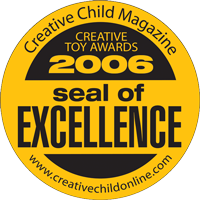
Collapsible content
This game is for kids as young as 3 up to 103. By remembering where the pirate treasure is secretly buried, players try to earn the biggest pile of gold coins.
The game comes with 29 island cards, most of which hide one of these 5 treasures, but 4 of them are hiding the skull and crossbones. There’s also this mysterious wooden pirate ship, and 30 gold coins.
Aargh helps develop early memory skills and reinforce concentration. Since the game plays quickly, it’s just the right length for short attention spans, and kids are drawn to the bright colors and fun pirate theme.
Shuffle the tiles and take turns drawing until someone draws the Skull and Crossbones. That person becomes the starting player.
Reshuffle all tiles, and lay out a grid of 5 by 5, with X-marks-the-spot side up. There will be an extra 4 tiles, which should be put back into the box. No one knows what tiles were removed from the game!
The starting player turns over two island tiles. If they match, continue turning tiles until one is revealed that does not match.
When this happens, collect 1 gold coin for each matching treasure that was uncovered. Place the wooden ship on the last tile that was revealed (the one that didn’t match) and then turn all other tiles back down.
Now the next player is searching for crowns. They earn one gold coin for each crown they can find. As the game proceeds, players are rewarded for remembering items that were revealed on previous turns.
If a player reveals skull and crossbones, they do not receive any coins this turn. Also, they have to give back a coin (if they have one.) The pirate ship is placed onto the face-up skull and crossbones, and other tiles are turned face down as normal.
On the next player’s turn, the rules are opposite! They are looking for skull and crossbones tiles and will receive 1 gold coin for each they find. Their turn ends when they reveal a normal treasure, and things go back to normal.
The game ends when the last gold coin is collected. The player with the most pirate booty is the winner and becomes the Captain of Aargh!
This game allows everyone to practice a valuable lifelong skill…memorization.
Aargh is a great memory game that grows with your child, but can be just as challenging for adults.

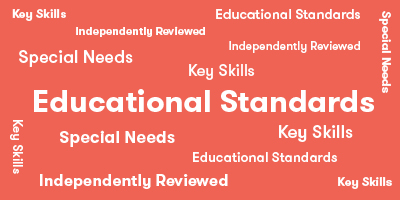
Head Start*
Language:
- Listening & Speaking
- Shows progress in understanding and following simple and multiple-step directions
- For non-English-speaking children, progresses in listening to and understanding English
- Develops increasing abilities to understand and use language to communicate information, experiences, ideas, feelings, opinions, needs, questions and for other varied purposes
Math:
- Numeracy & Operations
- Demonstrates increasing interest and awareness of numbers and counting as a means for solving problems and determining quantity.
- Begins to make use of one-to-one correspondence in counting objects and matching groups of objects.
- Geometry & Spatial Sense
- Shows growth in matching, sorting, putting in a series and regrouping objects according to one or two attributes such as color, shape or size.
- Patterns and Measurement
- Shows increasing abilities to match, sort, put in a series, and regroup objects according to one or two attributes such as shape or size.
- Begins to make comparisons between several objects based on a single attribute.
Science:
- Scientific Skills & Methods
- Develops increased ability to observe and discuss common properties, differences and comparisons among objects and materials.
- Reasoning & Problem Solving
- Grows in recognizing and solving problems through active exploration, including trial and error, and interactions and discussions with peers and adults.
- Develops increasing abilities to classify, compare and contrast objects, events and experiences.

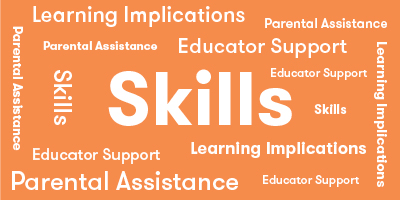
Explore
What Does Child Do To Use Skill In The Game?
Players examine the cards to understand the characteristics of the different treasures and the Squawk the parrot. As play progresses, players explore the game space by turning over cards.
How Parents Can Assist Learning
This game requires children to explore throughout the game. Encourage children to take their time to look carefully as cards are turned over. During game play, encourage children to say the names of the treasures aloud to help everyone learn which treasures are being exposed.
Learning Implications and Educator Support
This game requires children to explore throughout the game. Encourage children to take their time to look carefully as cards are turned over. During game play, encourage children to say the names of the treasures aloud to help everyone learn which treasures are being exposed.
Determine
What Does Child Do To Use Skill In The Game?
Players determine the type of treasure on each card turned over, and where to place the ship at the end of each turn. Additionally, they need to determine if to turn over an extra tile or stop.
How Parents Can Assist Learning
Parents can ask children to explain if the treasure they chose is what they expected. Verbalizing their thinking will help the parent understand how the child is trying to remember the location of the images on the tiles.
Learning Implications and Educator Support
Educators can add questions such as "Do you think the another goblet is above or below the one you turned over?" Use directional words, such as left, right, up, down, to help children learn spatial reasoning.
Compare
What Does Child Do To Use Skill In The Game?
Players compare treasure or Squawk the parrot that are visible with the next card that is turned over.
How Parents Can Assist Learning
Have children completely turn the cards over so that all the other players can see the treasure.
Learning Implications and Educator Support
Have children completely turn the cards over so that all the other players can see the treasure.
Remember
What Does Child Do To Use Skill In The Game?
This is the primary skill developed in the this game. Players are trying to remember which treasures were turned over in prior turns in order to obtain more gold coins.
How Parents Can Assist Learning
Encourage children to say the names of treasures aloud each time a card is turned face up and turned face down in order to help reinforce short term memory.
Learning Implications and Educator Support
Encourage children to say the names of treasures aloud each time a card is turned face up and turned face down in order to help reinforce short term memory. Additionally, have children try verbally pairing treasure with relative location. For example, when a crown tile is turned over, say "Crown in the corner" or "Crown in top row."
Practice
What Does Child Do To Use Skill In The Game?
Players are practicing visual-spatial memory and directionality by remembering relationship of treasures to each other and within columns and rows.
How Parents Can Assist Learning
Encourage children to say the names of treasures aloud each time a card is turned face up and turned face down in order to help reinforce short term memory. Also, as children are learning the game, parents can help children remember and make matches by pointing to a general location that a treasure is located or helping child think about which row and column a treasure is in.
Learning Implications and Educator Support
Encourage children to say the names of treasures aloud each time a card is turned face up and turned face down in order to help reinforce short term memory. Also, as children are learning the game, educators can help children remember and make matches by pointing to a general location that a treasure is located or helping child think about which row and column a treasure is in.
Solve
What Does Child Do To Use Skill In The Game?
Players solve a move by matching treasures. Also, there is some risk and reward analysis when a child is deciding whether to stop their turn, or continue turning over tiles to make a longer match sequence.
How Parents Can Assist Learning
Parents can give memory clues, such as "What column could the treasure be in?" or "I think it was on this side."
Learning Implications and Educator Support
Educators can give memory clues, such as "What column could the treasure be in?" or "I think it was on this side." To help children develop strategic thinking, have them discuss why they turned over more than two tiles or decided to stop turning over tiles after they had made a match. This will help you understand and, if needed, improve their risk and reward analysis.
Demonstrate
What Does Child Do To Use Skill In The Game?
Players can demonstrate their strategies if encouraged. See How Parents Can Assist Learning.
How Parents Can Assist Learning
To help children master the game, parents can demonstrate the strategy they used to help remember where a treasure was located, such as remember column, saying names of treasures aloud, or making up a sentence that includes the treasures in order.
Learning Implications and Educator Support
To help children master the game, parents can demonstrate the strategy they used to help remember where a treasure was located, such as remember column, saying names of treasures aloud, or making up a sentence that includes the treasures in order.
*Data compiled from CCSSI ELA Standards, WA Science Standards, and Washington Social Studies Standards

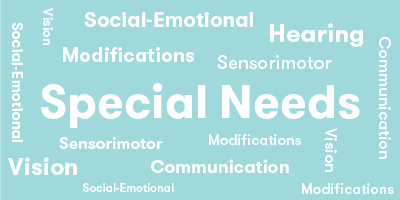
Cognitive
Suggestions for How to Modify Play Experience
Limit each turn to making a pair. Thus the maximum score for a turn is two coins. This will help children who are not be able to count up to five.
Give memory cues as needed, such as, "Think about what column the card was in. " I think it was up here some where," while the adult gestures to narrow down the area in which the child looks. Giving spatial cues may help children learn a strategy for remembering location.
Ask the child what card they are looking for, as they may lose focus and just start turning cards. This may prompt the child to use a memory strategy.
Communication
Suggestions for How to Modify Play Experience
As long as the child can comprehend the rules or learn through imitation, language should not be a problem.
Walk the children through the play for several turns before starting. As you are playing, describe what you are doing to remember where the card is. This will not only help children remember the rules of the game, but will remind children to use a strategy when playing.
Sensorimotor
Suggestions for How to Modify Play Experience
The scale and thickness of cards is sufficient for children with fine motor problems.
Social Emotional/Behavioral
Suggestions for How to Modify Play Experience
For children with impulsivity, narrate the process, so children know what to focus on before they turn the card. Ask the child what card they are looking for, as they may lose focus and just start turning cards.
Vision
Suggestions for How to Modify Play Experience
Island cards are large enough for children with low vision. They are not good for blind children without major adaptation.
Hearing
Suggestions for How to Modify Play Experience
Not a problem
*Data compiled from CCSSI ELA Standards, WA Science Standards, and Washington Social Studies Standards

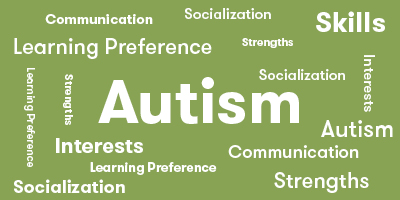
Autism Special Considerations
Appears to ignore other's communication and/or has difficulty giving eye contact to a communication partner
Is This Game Appropriate for Child with Characteristic? Yes
Can Child with Characteristic Play Game w/o Modification? Yes
Strategies for Developing Compensatory Skills:
Look at the game instead of each other.Use unusual or exaggerated inflection to begin a communication about the game or a turn. This attracts the child's attention.
Has difficulty understanding complex verbal directions
Is This Game Appropriate for Child with Characteristic? Yes
Can Child with Characteristic Play Game w/o Modification? No
Strategies for Developing Compensatory Skills:
Break down directions into small steps. Don't go through all the directions at once.Combine short verbal instructions with visual and physical examples of each step.Use photos to illustrate what needs to be done. These can be taken ahead of time. The combination of pictures and actions reinforces learning the steps. Also, take pictures during the game for use in later discussions about the game and what happened.
Use hand-over hand guidance if needed, so children feel the actions as the directions are being given. This helps develop the child's memory for the correct movements. Gradually reduce the support as the game is learned.
Check for comprehension by asking the child to show you what to do next.
Uses vocabulary inaccurately or demonstrates echolalia (repeating another's speech)
Is This Game Appropriate for Child with Characteristic? Yes
Can Child with Characteristic Play Game w/o Modification? No
Strategies for Developing Compensatory Skills:
Provide a correct model if the child names an overturned island card incorrectly.Respond to immediate echolalia (repeating what was just said) by rephrasing the child's response into a correct format, so the child can hear and repeat that phrase. For example, assume you are playing with a child named Andy and you say, "Your turn," and Andy repeats, "Your turn." You can say, "It's Andy's turn. You say, my turn." This allows the child to hear and repeat the correct response. Eventually, the child will pick up the pattern of response.
Delayed echolalia (repetition of previously heard comments) may have a hidden meaning or association. Look for connection in the phrase used to the current situation. For example, the child says, "After these messages we'll be right back!" Think what the repeated phrase is associated with for the child. Try to interpret what is meant and rephrase it for the child. For example, you might respond by saying, "It sounds like you want a break for a few minutes. Is that what you mean? You can tell me, 'I need a break.'"
Gets stuck repeating a verbal topic or physical actions and/or has difficulty attending to others' actions or topic.
Is This Game Appropriate for Child with Characteristic? Yes
Can Child with Characteristic Play Game w/o Modification? No
Strategies for Developing Compensatory Skills:
Incorporate a preferred topic into the game to increase motivation. For example, if the child is fixated on a particular character, like a favorite super hero, ask what the character would do if they were playing?
Practice phrases for commenting on others' play actions. For example, you say to Joe (who is playing with you), "Right on! You found three rings." Then ask the child, "What did Joe find? "
Remind children about listening and watching others' before making their own comment or action.Use a motivation toy or object to gain the child's attention. For example, a preferred wind-up toy can be placed on the board when it is the child's turn. The child gets to wind up the toy after completing their turn.
Has difficulty producing speech/communication
Is This Game Appropriate for Child with Characteristic? Yes
Can Child with Characteristic Play Game w/o Modification? Yes
Strategies for Developing Compensatory Skills:
Use gestures and sign language to illustrate actions or concepts. For example, use the sign language for each of the island pictures. This way the child and other players can indicate what they are looking for or found.
Extend the child's sounds into words or words into phrases to provide a model. For example, if the child says, "neck" the adult can say, "Yes. You found a necklace."
Provide at least 10 seconds wait time for the child to process or produce responses. It may take longer to formulate a thought or response for children with special needs
Has difficulty sequencing multi-step actions and/or doing complex abstract tasks
Is This Game Appropriate for Child with Characteristic? Yes
Can Child with Characteristic Play Game w/o Modification? No
Strategies for Developing Compensatory Skills:
Use fewer tiles to demonstrate the directions for the child.Demonstrate searching and matching the island cards several times, to ensure the child understands what to do. Have child demonstrate comprehension of directions.
Demonstrates difficulty initiating and maintaining social interactions
Is This Game Appropriate for Child with Characteristic? Yes
Can Child with Characteristic Play Game w/o Modification? Yes
Strategies for Developing Compensatory Skills:
Develop a social story to be read at the start of a game. A social story is a short booklet that illustrates how a child can use positive social skills. It includes two to five descriptive statements and a directive statement. For example: "When I watch others, I will know when it is my turn. Others like me when I take turns. I will watch what others do with their pieces and listen to what they say. Others like it when I talk about the game." Add photos or drawings of the child doing the actions described in the story.
Role play social situations and reinforce appropriate words and actions. For example, role play finishing the game and congratulating the winner. Or, role play commenting on another player's turn. For instance, "Oh, too bad. You found a ring instead of a goblet."
Use video feedback of positive social behaviors. Video of actual play enables children to see what they or others did. Appropriate actions and interactions can then be discussed.
Acts out or demonstrates avoidance behaviors when frustrated, overwhelmed, or needs more sensory input.
Is This Game Appropriate for Child with Characteristic? Yes
Can Child with Characteristic Play Game w/o Modification? No
Strategies for Developing Compensatory Skills:
Reduce extraneous noise or allow the child to wear head phones or ear plugs if loud sounds cause anxiety.
A weighted vest worn during the game may provide additional pressure input and thus reduce fidgeting due to sensory needs. Pressure can be calming when used for no more than 20 minutes at a time.
Practice a phrase to ask for help and role play situations in the game where it is needed.
Provide techniques for self-calming, such as holding a special toy.
Allow time for movement. For example, a child who needs to move frequently can be given an opportunity to 'celebrate' their turn by running around the table or jumping up and down 10 times.
Has short attention span for non-preferred activities
Is This Game Appropriate for Child with Characteristic? Yes
Can Child with Characteristic Play Game w/o Modification? No
Strategies for Developing Compensatory Skills:
Provide a break when needed.Use "when...then" phrases. For example, "When you take your turn, then I'll let you play with your toy."Frequently remind the child of the goal of the game. " You get a coin for every match ."
Incorporate a motivating activity as part of the play. For example, each player gets to manipulate a fun 'fidget' toy, such as a stress ball or squeeze toy.
Needs sameness or consistent routines and/or has difficulty with transitions from one activity to another
Is This Game Appropriate for Child with Characteristic? Yes
Can Child with Characteristic Play Game w/o Modification? No
Strategies for Developing Compensatory Skills:
Play games at the same time every day, so the child anticipates the game routine.
Change the location of the game, so the child may play in different rooms, at the table, or on the floor. This will build tolerance for variation.Prepare the child ahead time for the introduction of a new game. Talk about aspects that will be motivating for the child, and let them explore the parts of the game before setting out the whole game.
Provide a structure for placement of game pieces that can be the same each time the game is played. For example, have a specific location for where the board goes, the pieces, etc.
Provide choices for how the child can be involved in set up or clean up.
Involve the child verbally and with actions for the transition to the game table or at the end of game play. For example, you might say, "Let's look at the pictures on the game box and guess what it is about."
Use an object cue. Let the child hold an object from the game or activity you want to introduce prior to the transition. For example, if you were intending to play Aargh! you would hand the child the ship and say, "Look here is a ship. What game does it go with? Let's go find it."
Has difficulty understanding others' feelings, intentions, and the reasons for others' actions.
Is This Game Appropriate for Child with Characteristic? Yes
Can Child with Characteristic Play Game w/o Modification? No
Strategies for Developing Compensatory Skills:
Ask the child to explain their own feelings after a round.
Ask the child to explain how others may feel after a round.
*Data compiled from CCSSI ELA Standards, WA Science Standards, and Washington Social Studies Standards

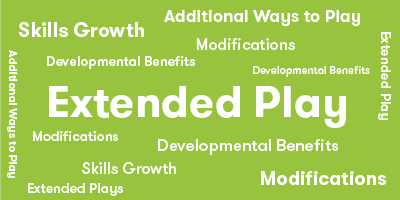
Extra Ways to Play the Game
Instead of matching two new tiles, the players find a tile that matches the tile with the boat on it.
Materials Needed
Nothing extra needed.
Developmental Benefits
This simplifies the game so the child only has to remember where one tile is located.
Extra Ways to Play the Game
To simplify the game, the players can choose to match the tile turned over to the tile with the boat on it or they can choose to turn over another tile to match the tile they just turned over.
Materials Needed
No additional materials are needed.
Developmental Benefits
This adds an element of choice-making, so children have to analyze which approach will give them a better chance at a match.
*Data compiled from CCSSI ELA Standards, WA Science Standards, and Washington Social Studies Standards
Game Details
- 25 Island Cards
- 4 Squawk the parrot Cards
- 30 Gold Coins
- 1 Pirate ship
- 1 Rules Booklet










